

Destinations
Experiences
 |
L A
D A T C O T O U R
S |
 |
||||||||
| HOME | South America | Falkland Islands | Antarctica | Unique Destinations |
Unique Experiences |
Newsstand | ||||
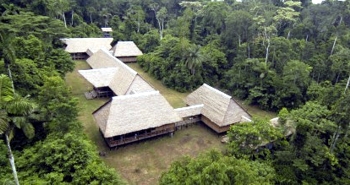 |
PERUVIAN
RAINFOREST Tambopata |
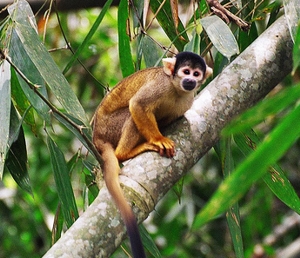 |
 |
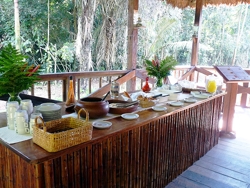 |
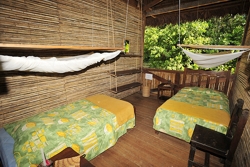 |
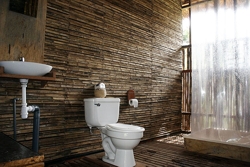 |
ABOUT THE TAMBOPATA RESEARCH CENTER - in their own words:
The Tambopata Research Center (TRC) is a spartan yet comfortable 18 bedroom lodge which was built more than fifteen years ago with the object of lodging tourists and researchers alike and of protecting the adjacent macaw clay lick. Because of its remote location in uninhabited wilderness housing stable populations of endangered wildlife, the small scale of its infrastructure and operations and the presence of researchers and naturalist guides, Tambopata Research Center is an excellent headquarters for in depth explorations of Amazonian nature and wildlife.
LOCATION - GETTING THERE:
TRC is located in a half hectare clearing in the middle of the uninhabited portion of the Tambopata National Reserve, adjacent to the Bahuaja-Sonene National Park and 500 meters from the world’s largest macaw clay lick.To get to TRC you must fly to Puerto Maldonado from Lima or Cusco on daily commercial flights lasting 30 or 90 minutes respectively. From the airport you are transported by truck to the Infierno River Port where you board our boats for the two and half hour trip to Refugio Amazonas. From Refugio Amazonas, TRC is four hours upriver, and a few minutes walking from the river.
WHO SHOULD GO TO TAMBOPATA RESEARCH CENTER?
Tambopata Research Center requires at least four nights because of the travel time. One consecutive afternoon and morning are spent on the way to and from the lodge, so unless you plan on spending at least two nights at TRC, the hours in the boat are not worth it. However, TRC is the ideal option for in depth explorations of the rain forest lasting four or more nights because:The seven hour upriver drive takes you 150 kilometers into the uninhabited heart of the Tambopata National Reserve, where the surrounding wilderness is untouched. The largest known macaw clay lick is five hundred yards from the lodge. Dusky headed titi, squirrel, brown capuchin, howler and spider monkeys, as well as capybara, caiman, and agouti are seen frequently. Although very difficult to see, herds of peccary, tapir and jaguar are all at their carrying capacity.
Two state of the art, long term research projects are based out of TRC: the macaw project and the areas project (see Conservation Impact Sheets).
The combination with Refugio Amazonas allows you to experience the canopy tower and the oxbow lake.
ACCOMMODATIONS:
Tambopata Research Center is built using a combination of traditional native materials (wood, palm fronds, wild cane and clay) and architecture and modern day eco-lodge technology. The lodge consists of one wing of 18 rooms connected by raised boardwalks to eight shared bathrooms, the research quarters and a dining room. The dining room is an open building that doubles as a bar.Rooms are small and hold two beds. The walls dividing each room are built using cane, and extend from the floor to about 2.5 meters height making each room private. The side that looks out to the forest does not have a wall or screening of any kind, acting as a large window facing the forest. The reason we have been able to incorporate this "luxurious" design into our lodge is because mosquitoes are not really a problem around the lodge clearing and the open section allows for an intimate contact with the rain forest.. Doors are replaced with drapes. Rooms are not soundproof. Each room has beds, mosquito nets, bedside tables and a rack of clothes hangers. Bathroom are shared, and have no hot water.
The research quarters is a two story building usually full of scientists and their assistants from the macaw project.
MEALS:
We provide self-serve three course meals at Tambopata Research Center. Meals consist of soup or appetizers, salad, main course, and desserts combining Peruvian and international cuisine. All fresh fruits and salads are thoroughly disinfected before serving. We also provide at all times unlimited amounts of boiled, filtered, cooled drinking water, coffee or tea and we provide fruit juices during the meals. If any visitor has special dietary requirements, we are happy to make individual arrangements, but please notify us.
COMMUNICATIONS:
Tambopata Research Center is in daily HF radio contact with our offices in Puerto Maldonado and Lima from where we are able to communicate by email, fax or phone with the rest of the world.
LIGHTING & ELECTRICITY:
Tambopata Research Center has no electricity. Light is provided by numerous kerosene lamps and candles. A generator is turned on once a day to recharge batteries for guests or lodge facilities. At night it is very dark, so we recommend good flashlights.BOAT TRANSPORTATION:
All our boats are 20 foot long, roofed canoes with 55 hp outboard motors. Daily arrivals and departures from every port are scheduled to meet every airline´s arrival and departure with a maximum two hour wait.